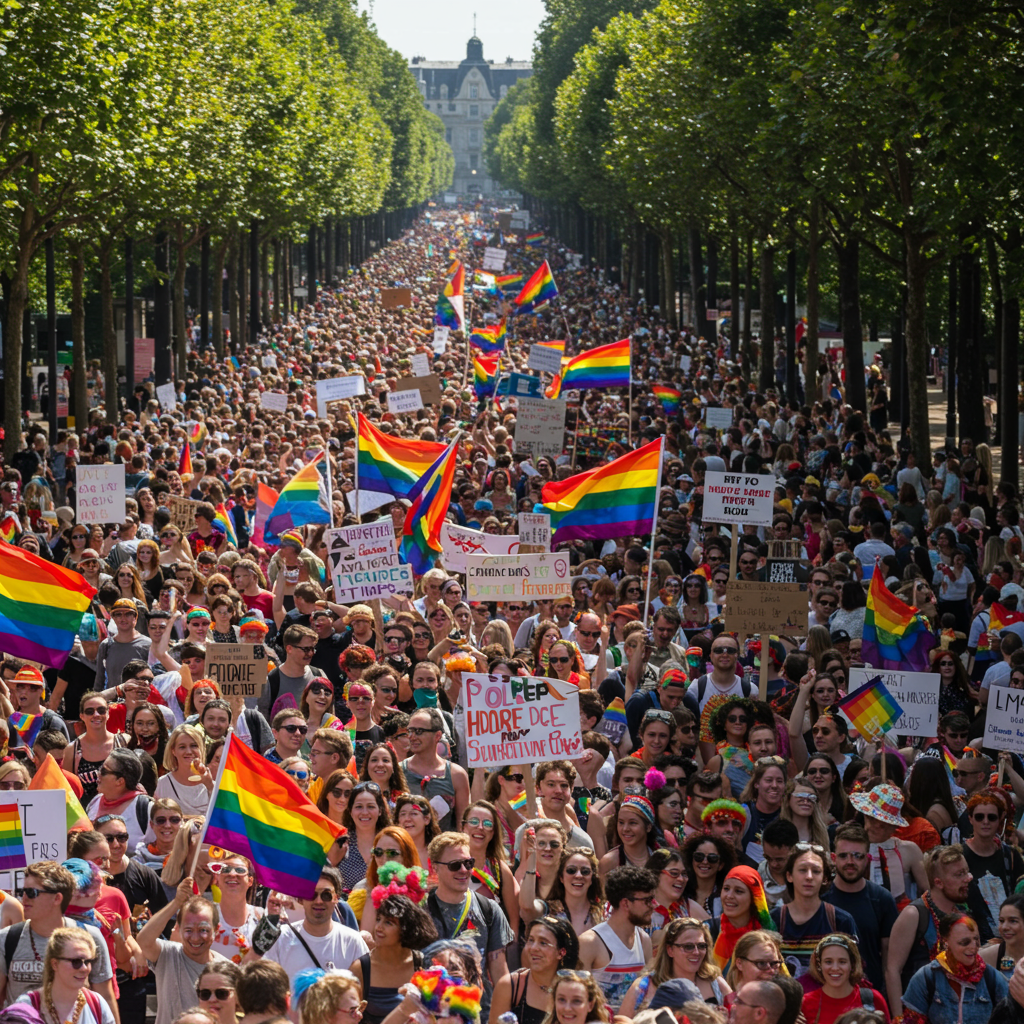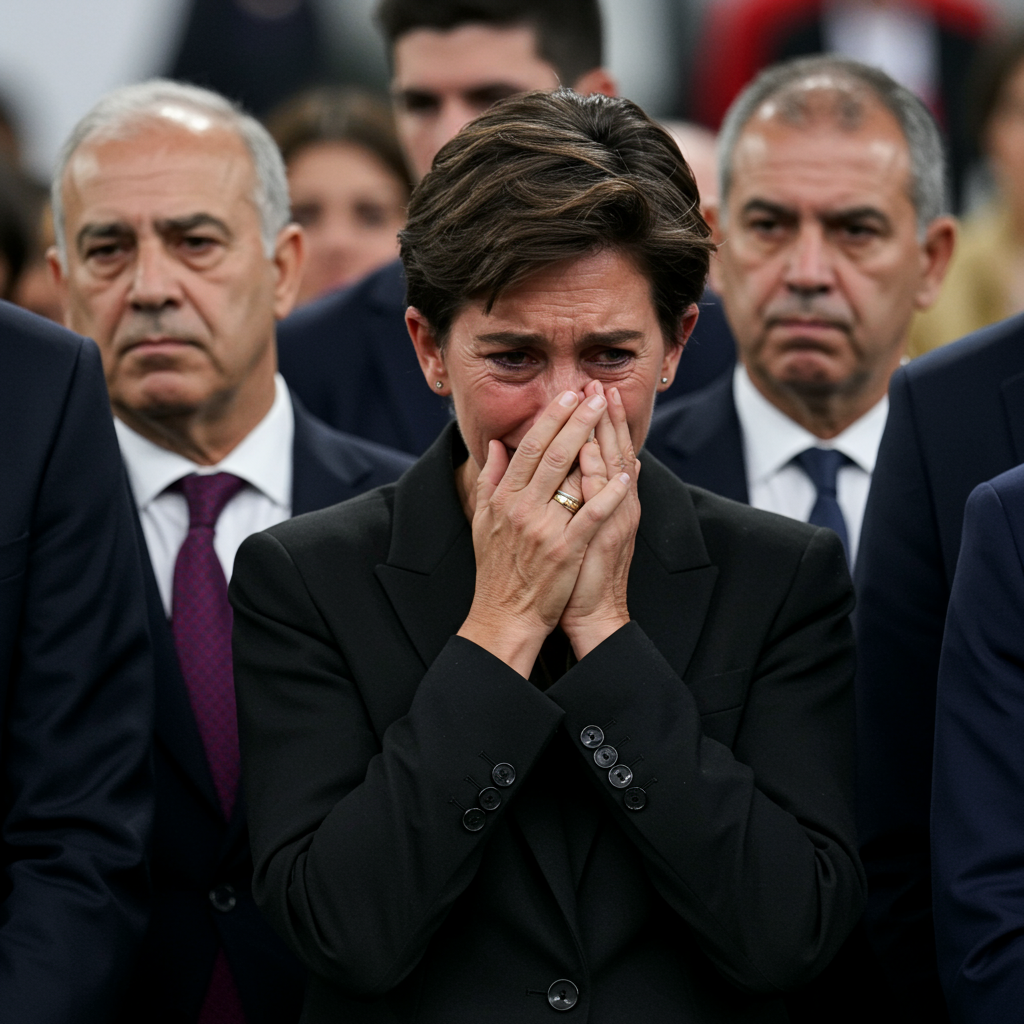In a powerful demonstration of resistance, tens of thousands of people recently marched through Budapest for the annual pride parade. This massive gathering took place despite attempts by the Hungarian government to ban the event. It marked a significant act of defiance against a controversial law that severely limits the depiction and discussion of lgbtq+ identities. The event became a vibrant protest symbol against Prime Minister Viktor Orbán and his ruling Fidesz party’s policies. Critics widely condemn these policies as increasingly authoritarian and discriminatory against the LGBTQ+ community.
Estimates of the turnout ranged from 100,000 to a staggering 200,000 participants. Organizers described it as the largest LGBTQ+ Pride event in Hungary’s history. This record attendance sent a clear message. It underscored the depth of opposition within Hungarian society to the government’s stance on LGBTQ+ rights.
Marching for Rights in Budapest
Budapest Pride has a long history as a vital event for Hungary’s LGBTQ+ community and its allies. However, the 30th anniversary march held particular significance this year. It was the first major public demonstration of support for LGBTQ+ rights since a restrictive law was passed, which the government then attempted to use to ban the parade itself.
Participants came from across Hungary. They were joined by international supporters. Dignitaries from EU institutions and numerous countries also attended. Waving flags and carrying banners, the crowd transformed the Hungarian capital’s streets. It was a colorful assertion of human rights and freedom of expression. Organizers emphasized the critical importance of the event. It directly challenged legislation widely criticized by human rights groups and the European Union.
Marchers proceeded peacefully, deliberately defying the police ban initially sought by the government. They sent a clear message: attempts to suppress visibility and discussion of LGBTQ+ issues will face resistance. The atmosphere blended celebration with determined advocacy. Families, young people, and long-time activists marched together. They were united by a common cause. They demanded respect, equality, and the repeal of discriminatory laws.
Hungary’s Restrictive Law Explained
The legislation Budapest Pride participants were protesting was adopted by Hungary’s parliament in June 2021. Initially presented as a bill targeting pedophilia, controversial amendments were added. These changes ban “the depiction or promotion of gender identity different from sex at birth, gender change or homosexuality” for individuals under 18. This prohibition affects content in media, advertising, and educational materials.
Critics argue the law deliberately links pedophilia with consensual same-sex relationships and gender identity. This tactic is used to stigmatize the LGBTQ+ community. Human rights organizations have strongly condemned the law. They state it violates fundamental rights, including freedom of expression and non-discrimination. The European Union has also initiated legal proceedings against Hungary. The EU views the law as a breach of core EU values. This case is now being heard by the EU court.
Prime Minister Viktor Orbán openly promotes a vision of Hungary as an “illiberal democracy.” He emphasizes traditional Christian and national values. His government has increasingly targeted civil society groups, independent media, and academic institutions. The anti-LGBTQ+ law is widely seen as a further step in consolidating power. It pushes a conservative social agenda. This agenda conflicts with liberal democratic norms and EU standards. It represents what critics call an “unprecedented regression” of LGBTQ+ rights within the EU.
The Government’s Stance and Threats
The Hungarian government justified the ban attempt and the law itself by claiming they defend traditional family values. They also cited the need to protect children. Orbán had previously identified Budapest Pride as a specific target of the restrictive legislation. His government further cemented the ability to ban such events through subsequent constitutional changes.
Despite the overwhelming turnout, the march took place under threats of legal consequences. On the day before the event, Orbán stated police would not physically disperse the crowd. However, he warned participants about potential repercussions. These included fines up to 200,000 Hungarian forints (about $586 or €500) for attendees. Organizers faced even harsher penalties, potentially up to a year in prison.
Furthermore, the government introduced measures allowing the use of facial recognition technology. This was intended to identify attendees of banned events. Reports confirmed new cameras capable of this technology were installed along the planned march route. Hungary’s Justice Minister also issued a warning. He cautioned EU diplomats against attending, citing the perceived police ban. Budapest’s opposition mayor, Gergely Karácsony, played a crucial role in circumventing the police ban. He declared the march a separate municipal event. This tactic aimed to make police approval unnecessary. He argued police should only ensure safety, not penalize attendees.
International Condemnation and Solidarity
The attempted ban and the subsequent defiance drew significant international attention. Over 70 members of the European Parliament joined the procession. This was a direct show of support and defiance against the government’s actions. The EU’s Commissioner for Equalities also publicly supported the parade. A joint statement backing the march was released by 33 nations. This included most EU member states.
EU chief Ursula von der Leyen called on Hungarian authorities to reverse the ban. Hadja Lahbib, the EU’s commissioner for humanitarian aid, noted that “all eyes are on Budapest” as marchers defied the ban. International presence highlighted that the struggle for LGBTQ+ rights in Hungary is not isolated. It is part of a broader global movement for human rights. This international pressure adds scrutiny to the Hungarian government’s actions.
The resilience shown by organizers like Viktoria Radvanyi and participants is a testament to Hungary’s civil society strength. Even under increasing pressure and potential surveillance, activists mobilized. They advocated for their rights. The event gained significant global media coverage. This brought worldwide attention to the situation in Hungary. It highlighted the challenges faced by its LGBTQ+ community.
More Than Just a March: Political Context
Political analysts interpret the government’s crackdown on LGBTQ+ rights, including the attempt to ban Pride, as a deliberate strategy. Analysts like Daniel Mikecz suggest Orbán uses these actions to “generate a conflict” and “polarize society.” This is seen as a “tried-and-tested recipe” ahead of next year’s national elections. Orbán’s Fidesz party has faced declining popularity. They are also dealing with a new challenge from within their own political sphere, represented by Péter Magyar.
Campaigners believe they are being used as a scapegoat. This is intended to consolidate support among conservative voters. The ban on the Pride march specifically amended the earlier 2021 law. It was solidified by a constitutional change a month later. This marks the first time Hungary has banned a Pride march in recent EU history. Some compare it to crackdowns seen in Moscow in 2006 or Istanbul in 2015.
Participants saw the march as more than just defending sexual minorities’ rights. They viewed it as a protest against what they perceive as an accelerating crackdown on democratic processes under Orbán’s administration. As one student put it, it was a stand not only for LGBTQ+ rights but for broader Hungarian rights. The massive turnout was viewed as a significant setback for Orbán’s prestige. Participants hoped the record numbers would demonstrate widespread support for the cause. They hoped it might influence the government’s approach.
Challenges and Hope Ahead
The passage of the anti-LGBTQ+ law and continued government rhetoric create a challenging environment. Concerns remain about the law’s interpretation and enforcement. Its impact on education, media, and public life is worrying. Activists fear it could further marginalize an already vulnerable group.
However, the unprecedented success of Budapest Pride offers a source of hope. The willingness of so many people to publicly stand up for rights indicates strong opposition to the government’s discriminatory policies exists within the population. Continued activism, legal challenges, and international pressure will be vital. They are needed to push back against these restrictions. They are needed to advocate for equality. The future of LGBTQ+ rights in Hungary remains uncertain. It is caught between a government committed to its “illiberal” agenda and a determined civil society fighting for fundamental freedoms. Events like Budapest Pride are crucial. They keep these issues in the public eye. They mobilize support both domestically and internationally.
Frequently Asked Questions
What specific actions did Hungary’s government take regarding Budapest Pride?
Hungary’s government attempted to ban the annual Budapest Pride march using recently amended laws and constitutional changes. They cited “child protection” as justification. While police did not forcibly stop the large crowd, the government warned participants of potential legal consequences. These included fines for attendees and prison time for organizers. They also introduced facial recognition technology to identify marchers. Budapest’s mayor helped circumvent the official ban by declaring the event municipal.
How did Hungary’s new law affect LGBTQ+ rights and visibility?
The law, passed in 2021 and later solidified, bans the depiction or promotion of gender identity and homosexuality for individuals under 18. This restricts content in media, advertising, and education. Critics argue it falsely links LGBTQ+ identities to pedophilia and aims to suppress visibility. It is seen as part of a broader government effort to roll back LGBTQ+ rights, including restrictions on adoption and legal gender recognition.
What was the significance of the record turnout at Budapest Pride?
The unprecedented turnout, estimated between 100,000 and 200,000, held immense significance. It represented a direct and large-scale defiance of the government’s attempt to ban the event and its broader anti-LGBTQ+ policies. The numbers demonstrated widespread opposition within Hungary and strong civil society resilience. It also garnered significant international attention and support, highlighting the global dimension of the struggle for rights in the face of increasing restrictions.
Word Count Check: 1180




